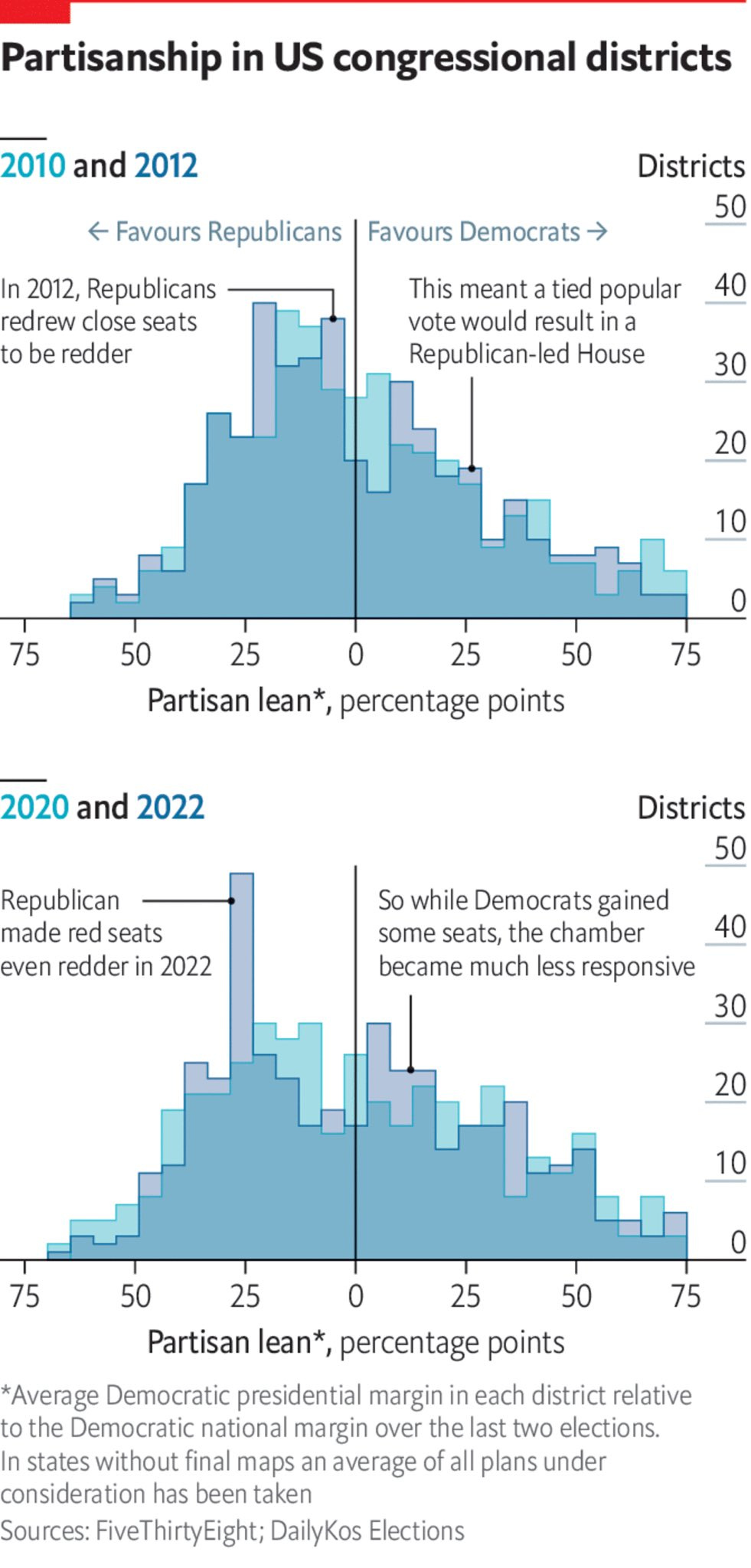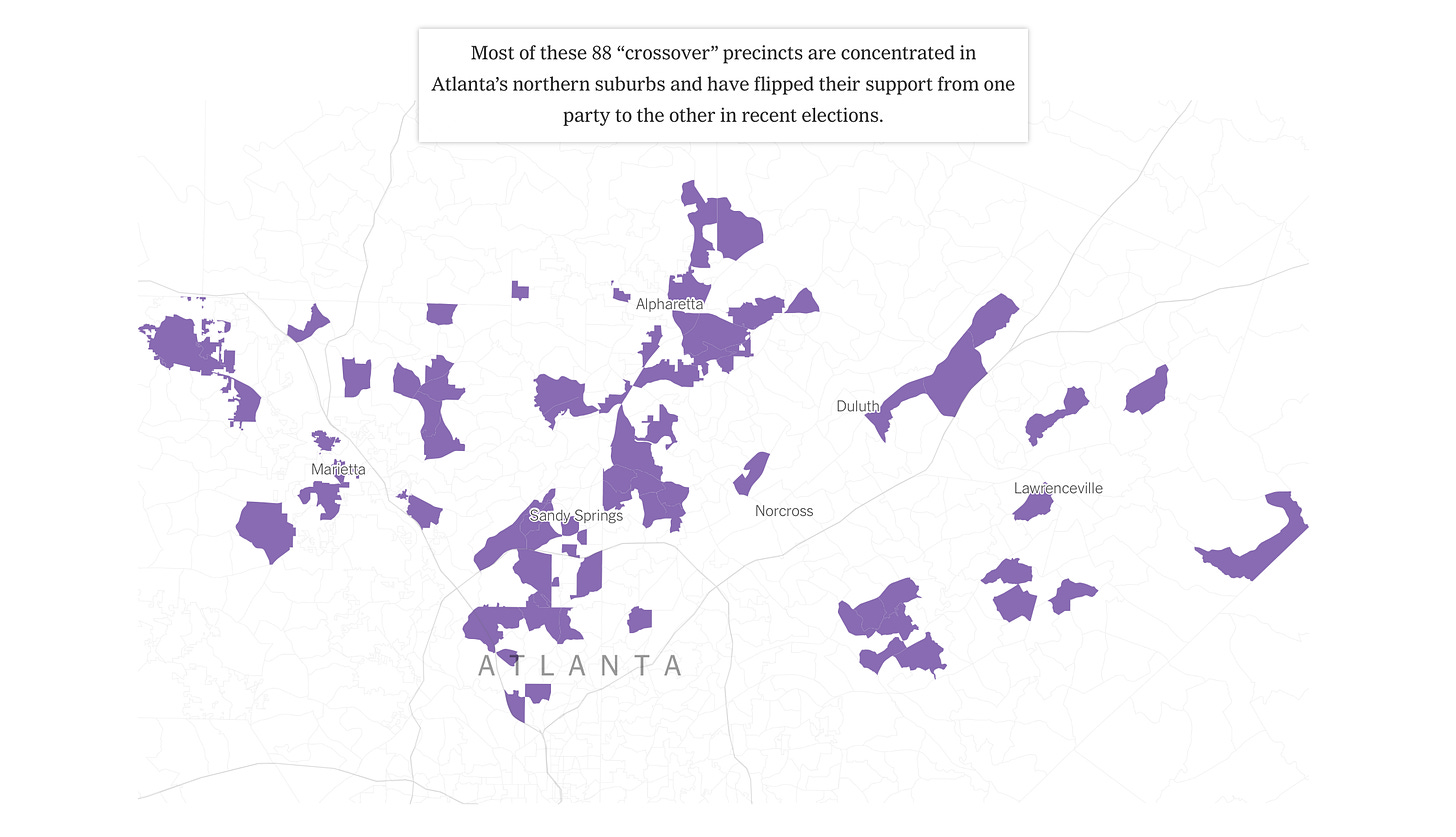Midterms, gerrymandering, and Republican turnout | Links for December 4-10, 2022
In which I return from my post-election slumber
Happy Saturday, subscribers. Here is your weekend reader.
1. Cook Political Report: Competitiveness in GOP-drawn House districts was much lower than in Democratic ones
Dave Wasserman says on Twitter that just two of the 173 districts drawn by Republicans were decided by less than 5 percentage points; compared to 30 in Democratic districts.
He shares this table:
Remember that this is because Republicans opted to draw Congressional district plans that decrease the number of competitive districts and increase the number of safe ones, thereby insulating them from large Democratic “wave” years but decreasing seat gains in cycles with smaller GOP popular-vote margins. The Economist had a great chart on this way back in February!
A big takeaway here is that gerrymandering can produce maps that look unbiased according to some measures, but produce perverse partisan skews in other ways — or would if the popular vote was slightly different. See here:


2. Outside of FL and NY, a banner midterm for Democrats
FiveThirtyEight had a great graph in a piece this week on which Democratic and Republican House candidates did the best relative to the partisan benchmarks of their districts:
This chart shows GOP overperformance in New York and Flordia, their best states by a mile. That was likely due to a mix of coattail effects for senate and governor elections (Marco Rubio and Ron Desantis dramatically outperformed Trump’s 2020 margins in Florida, for example) and state-level effects from particular issues (perhaps crime and redistricting in New York).
This got me thinking: What does the Democrats’ performance in this year’s midterms look like if you remove Florida and New York? Specifically, in terms of seats gained. Well, between the two states, Republicans picked up 7 seats. Assuming half of them would have been won by Democrats without those fixed effects removed, and you get 218 seats for Republicans — a majority of one seat and a change of five since the last election. In the 22 other midterm elections since 1934, the party out of power has only done worse than that in 4 other years: 1934, 1962, 1998 and 2002.
Of course, Florida and New York do actually exist, and Republicans still did poorly in historical context if you include the results in those states, so that is mostly an exercise in semantics.
3. After Georgia, swing voters on my mind
Here is a map from the New York Times highlighting a selection of 88 precincts that voted for both Republican Brian Kemp for governor and Democrat Raphael Warnock for senator (in the November general, not the runoff):
Most of these precincts also went for Donald Trump in 2016 and Joe Biden in 2020. They are both purple swing precincts — those that switch parties from year to year — and precincts with a higher-than-usual number of split-ticket voters. This is an important distinction; a swing in aggregate vote totals could technically be caused by either (a) a person changing the party they vote for or (b) one side of the aisle choosing not to vote. But the fact that the same voters (minus some dropoff) in these precincts voted both for Kemp and Warnock shows that split-ticket, swing voters are alive in Georgia. Just look at these maps!
They show that voters in Atlanta, in the same election year, voted both (1) more for Kemp than for Trump in 2020 AND (2) more for Warnock than for Biden.
The Times analysis also finds that vote-switching was highest in precincts with more college-educated voters (see chart below), and that Warnock’s margin wasn’t the result of dropoff in turnout. The Times finds that turnout among registered Republicans was also high in other states; those voters just didn’t want to vote for Republican candidates.
Of course, readers of this newsletter ought to know by now about the power of party-switching. It is a far bigger source of change in election outcomes than changes in turnout — both in the US and abroad:


That’s it for this week’s links. Tomorrow’s weekly post will be about polling and artificial intelligence.
Have a nice weekend,
Elliott










